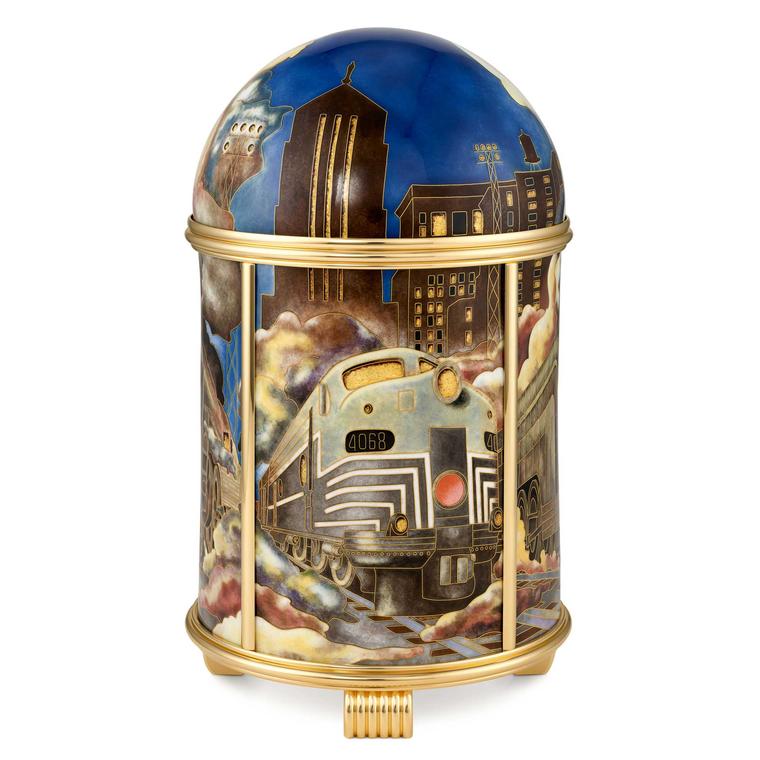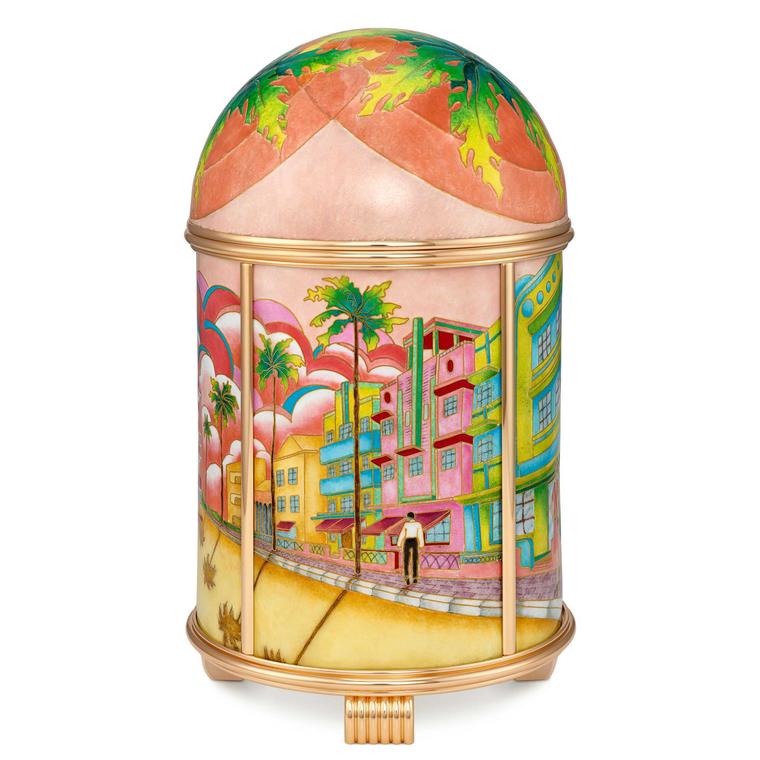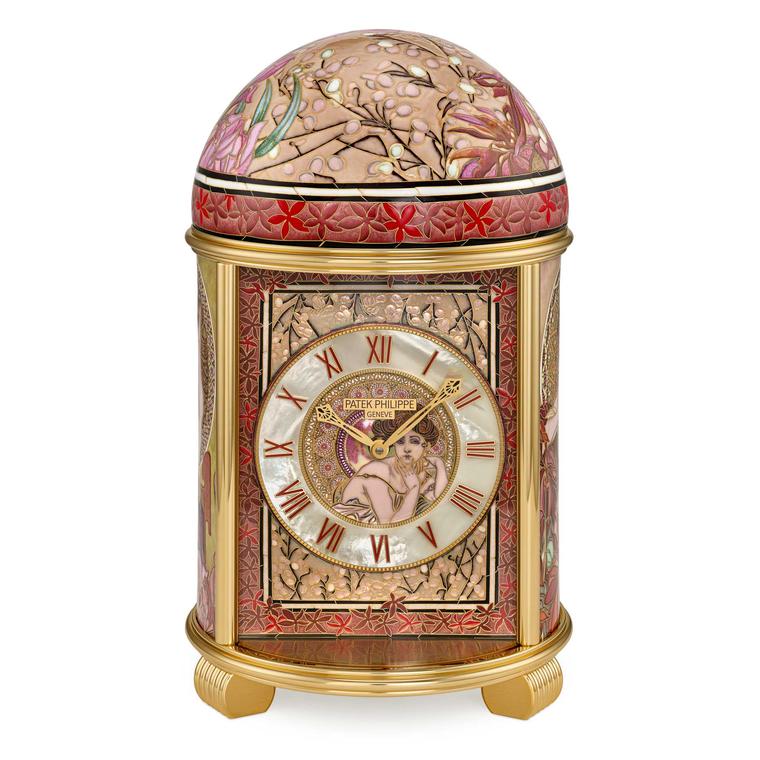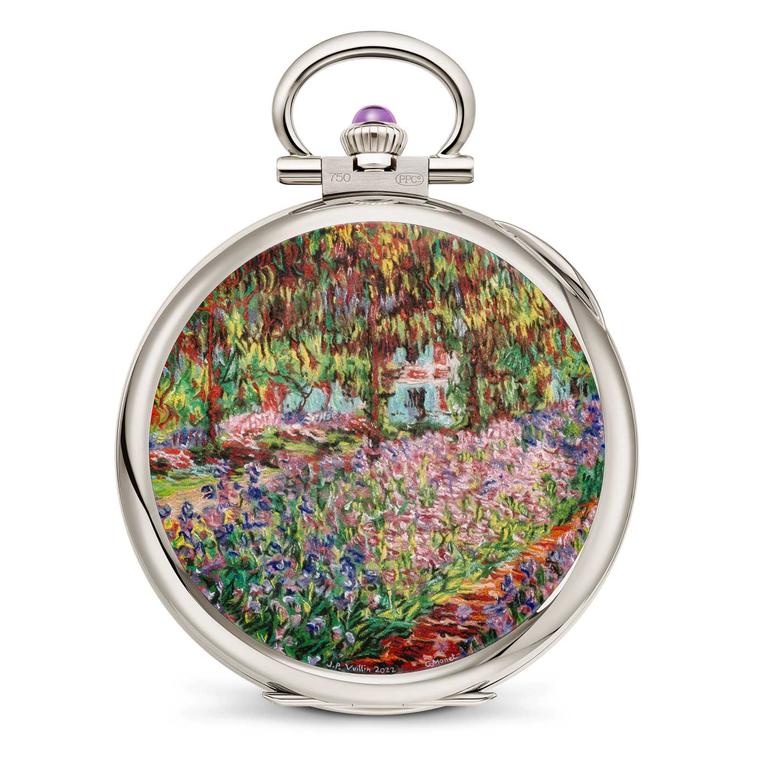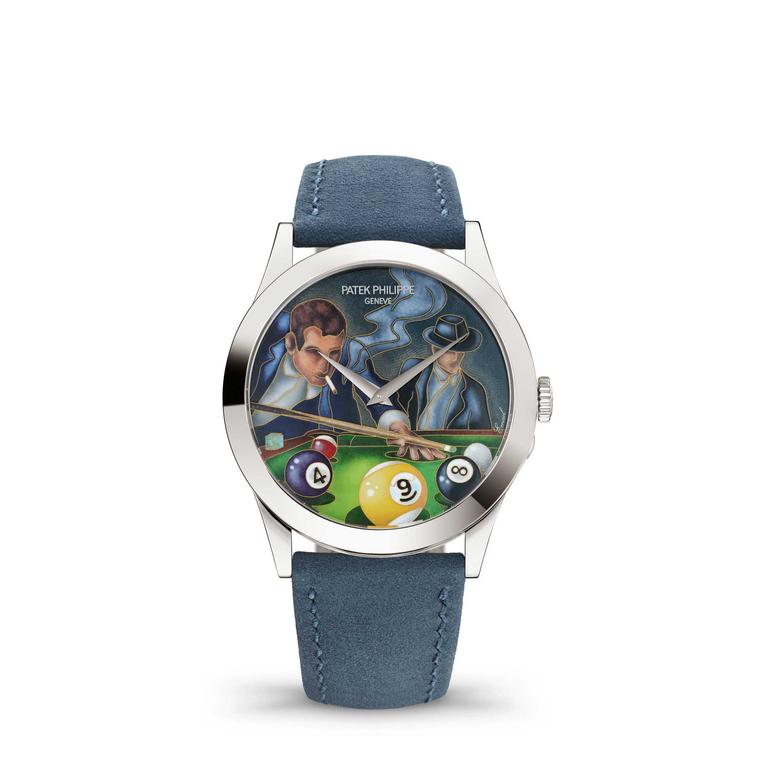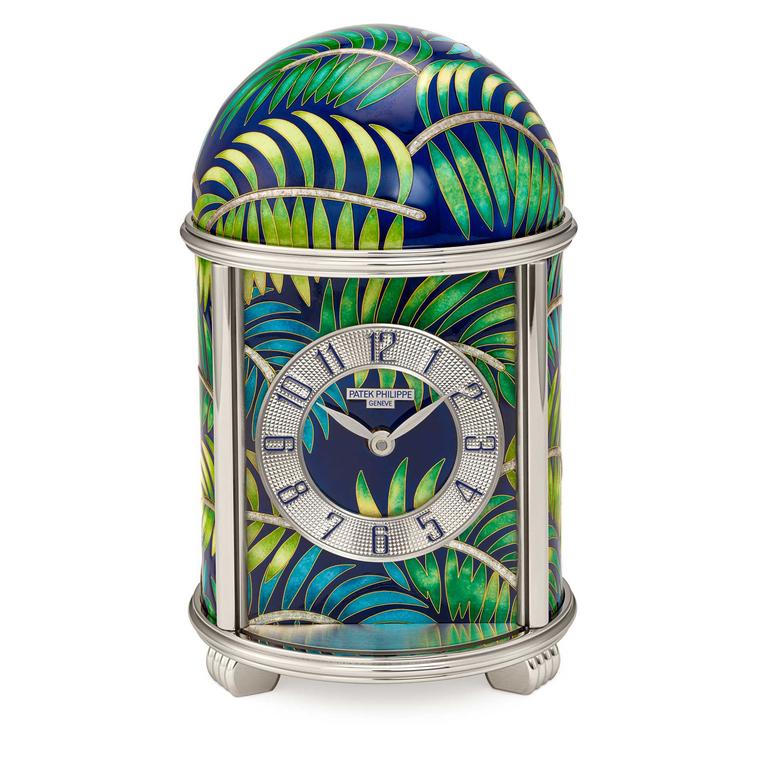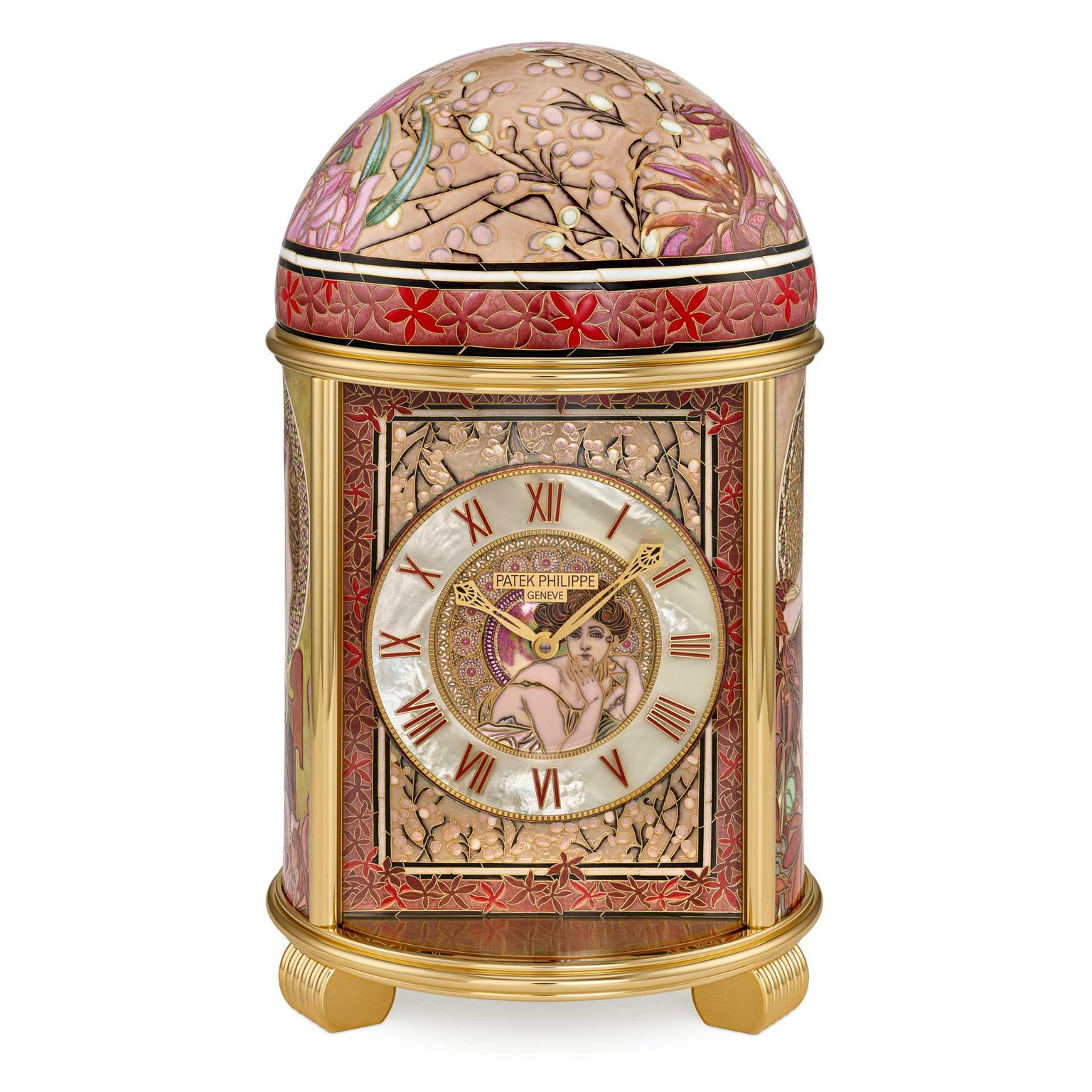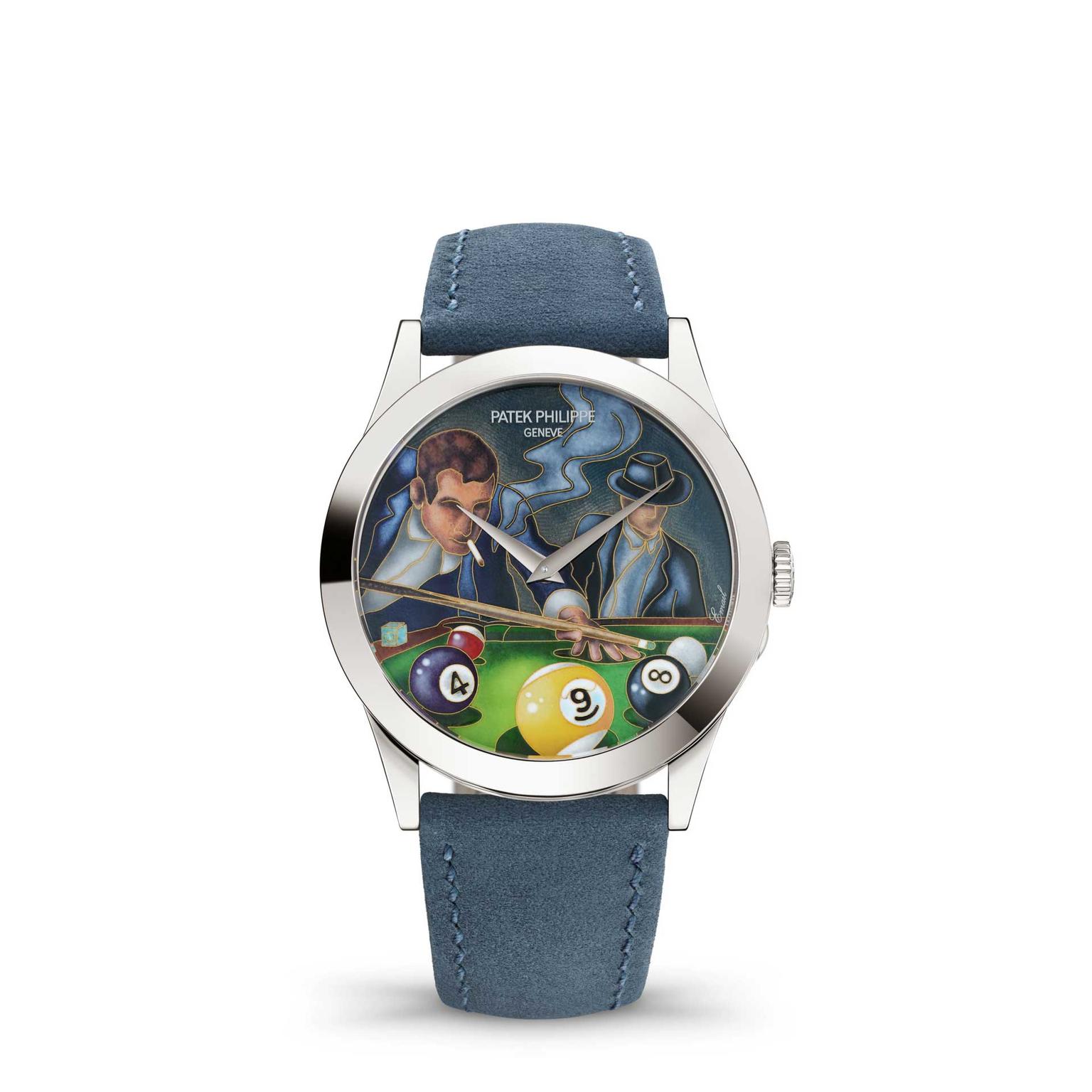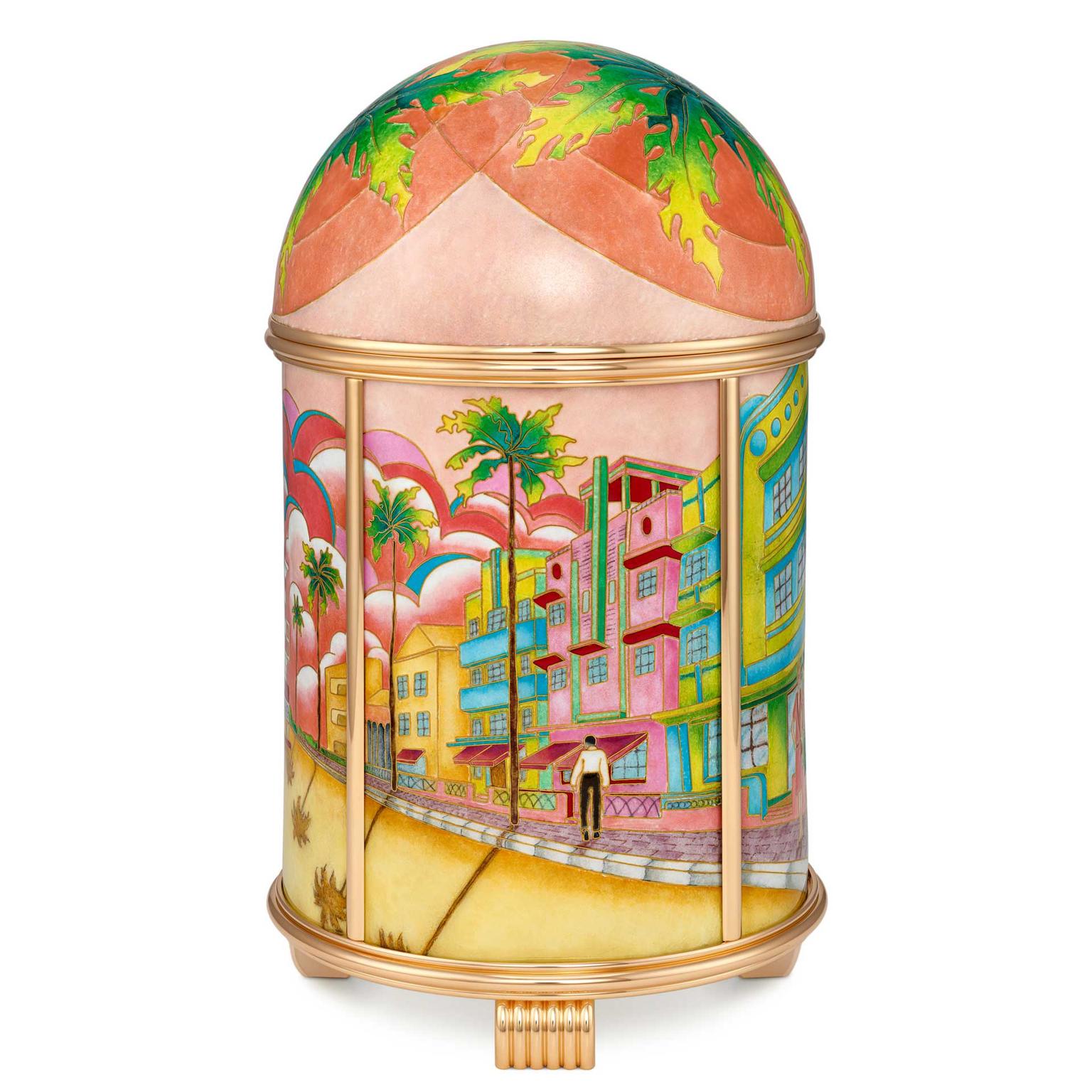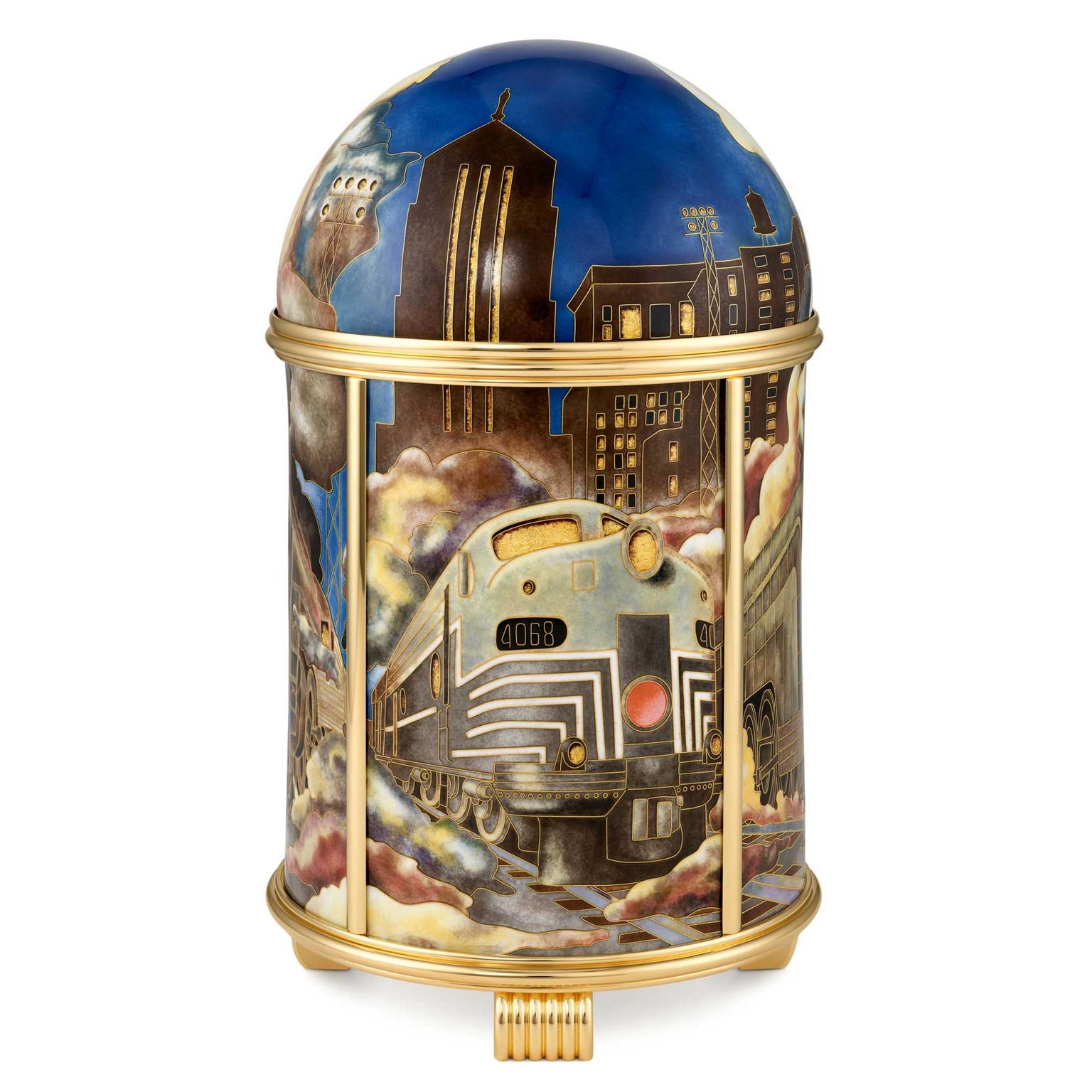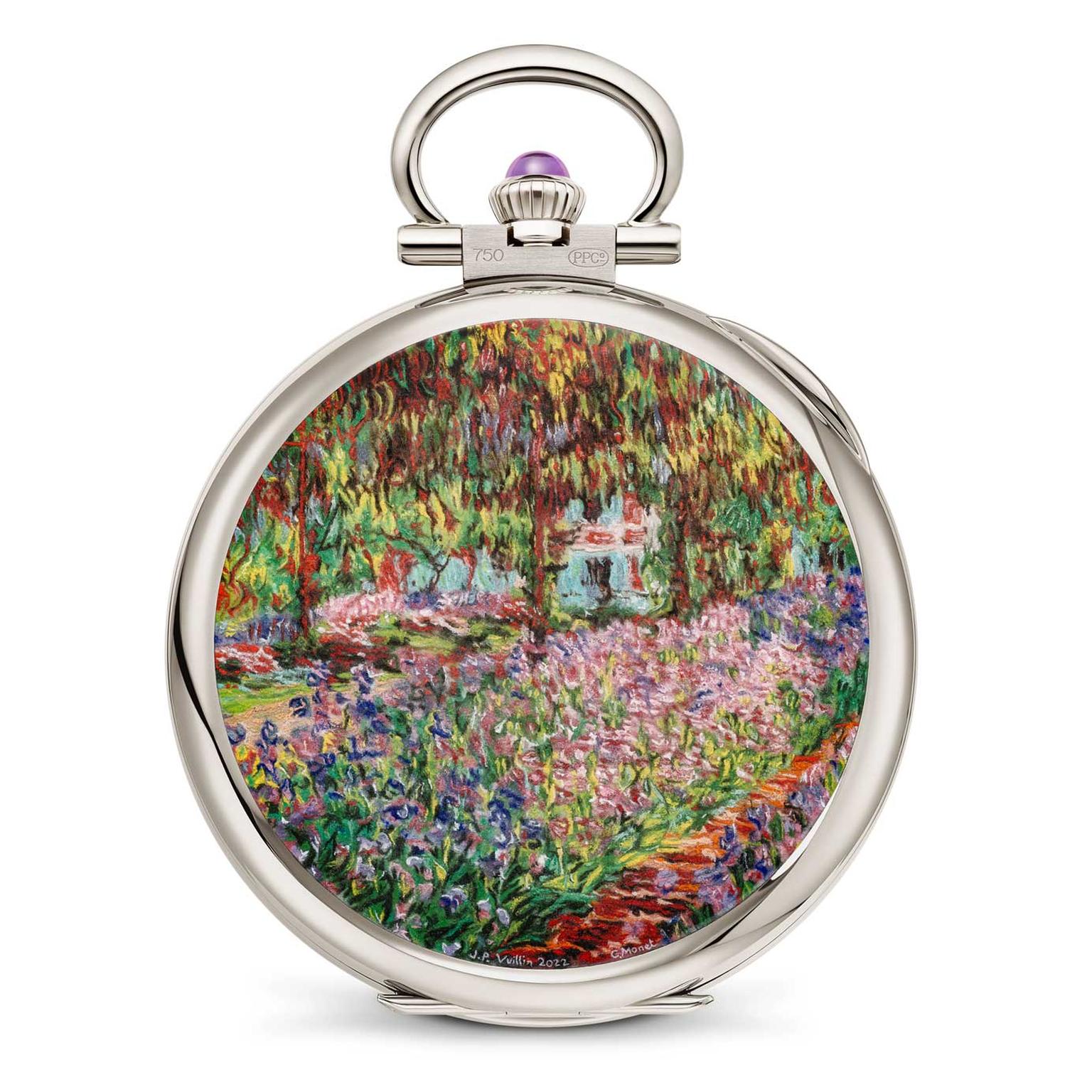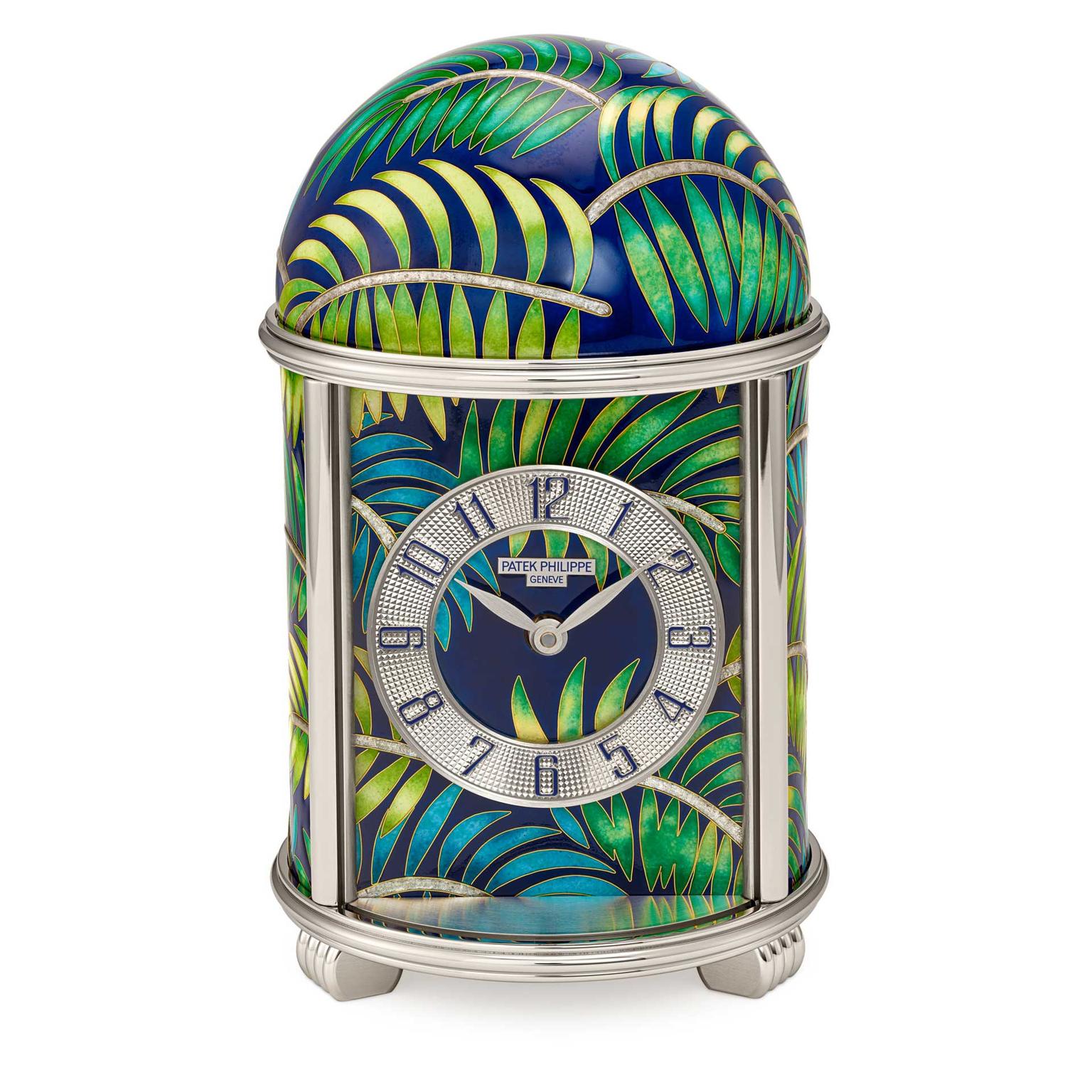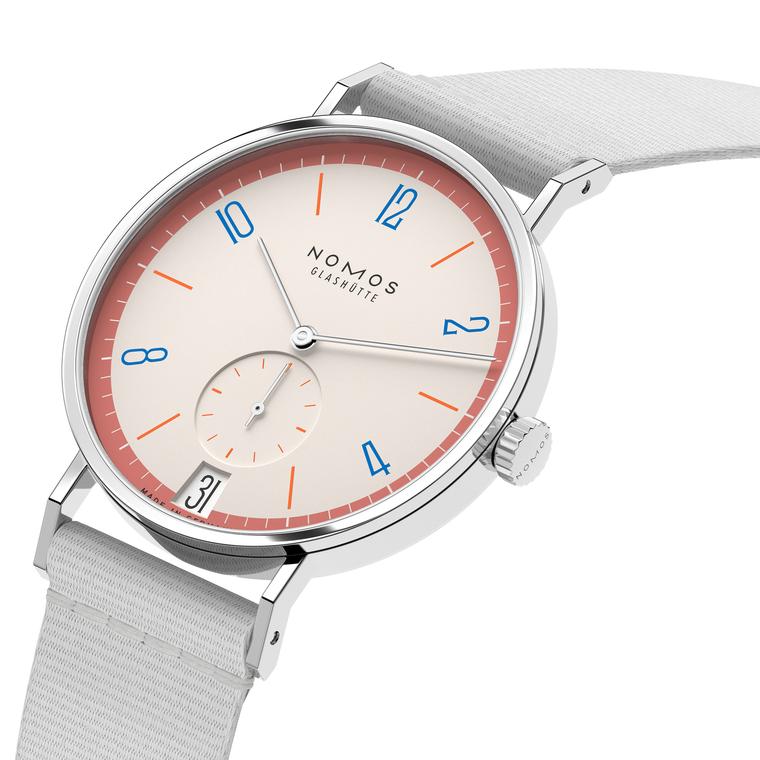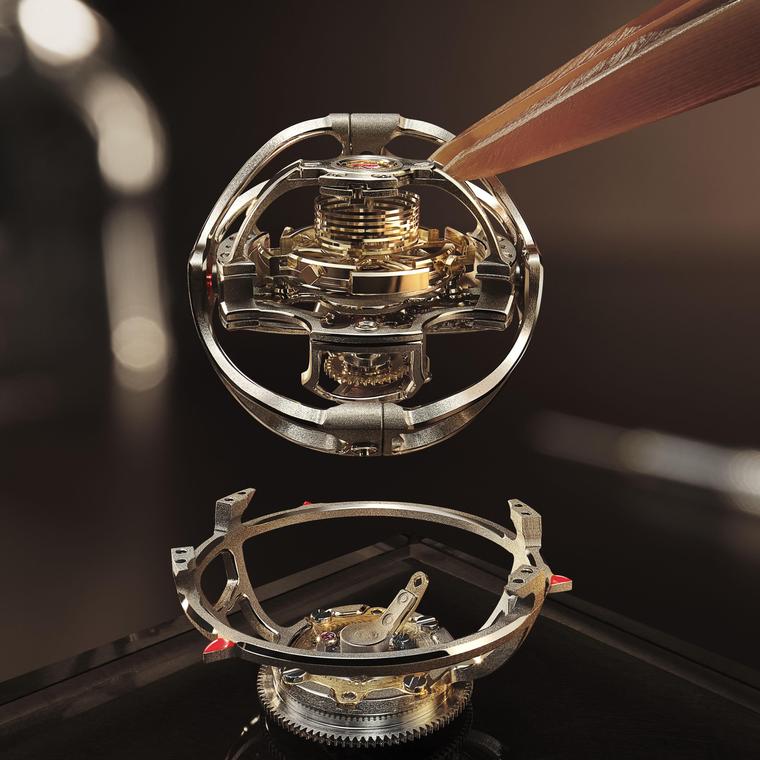This remarkable unveiling for Swiss watchmaker Patek Philippe was located at the corner of Bond Street and Clifford Street. In its handsome London flagship boutique, the company assembled the most significant 'Rare Handcrafts' collection. The 83 timepieces include 27 dome clocks, three table clocks, ten pocket watches, and 43 wristwatches, each artfully decorated in a wide range of styles that employ an equally impressive range of handcrafts.
The styles on display are as diverse as they are unique. Imagine a dome clock adorned with an Art Deco Miami beach scene in acid bright pinks, greens, and orange enamel; a chisel-chinned topless surfer dude depicted in micro wood marquetry with waves crashing in the background (below), or a fedora-wearing billiard player honing his attention on the end of his cue in a smoky saloon. Themes range from Japanese blue and white carps and dragonflies to the hazy, meandering forms of Claude Monet's Water Lilies oil painting. There is even a collection of watches depicting 1950s American cars or a dome clock that captures the thrill of the age of the train, these smoke-belching steel behemoths majestically gliding past New York skyscrapers (above). All these characters and scenes have their place in Patek Philippe's universe, alongside more traditional scenes of Swiss lakes, idyllic English gardens, and classical constellations.
Showing an equally open mind, Patek Philippe prides itself on keeping traditional techniques alive and invigorating them with new 'mixed techniques' that take the craft to new frontiers. Centuries-old crafts include different Grand Feu enamel work categories, bringing vibrant colours and glossy depth to these remarkable scenes. Patek Philippe's craftsmen and women are masters of the full range of different high-temperature enamel techniques. Like a paint, made of water and colour glass powder each scene requires months of work that are subject to multiple high-temperature firings. One air bubble and the piece could explode in the oven, shattering the piece in this game of handcraft roulette.
Amongst the enamels seen in the exhibition is cloisonné enamel, which encloses or cloisters the section of enamel within delicate gold borders; champlevé that places glass powder into recesses hollowed out from the metal, or pailloné that places flecks or 'paillons' of gold foil between layers of glassy enamel to create an effect of luminosity. It is particularly effective in depicting reflections on glass or the shimmering of light on water. Grisaille is a method of decoration that requires the artist to apply powder-fine blanc de Limoges porcelain powder with diminutive paintbrushes onto layers of contrasting enamel to create a dramatic contrast and a diffused finish to the image. Glass powder is mixed with oil to make miniature paintings on enamel, which is then covered in layers of flux to fix and protect the small-scale work of art. Longwy enamel - named for the town of its origin in northeastern France - painted on faience is another unusual skill that creates volumes with a crackled finish using enamel colours enclosed within 'cernes' or black outlines.
Beyond enamelling, Patek Philippe also deploys sophisticated metal decorating techniques. Guilloché or engine turning adds textured metal surfaces around dials or provides an undulating play of light under layers of translucent enamel. Hand engraving is as close as you can get to painting in three dimensions in metal. Artists carve, mark and sculpt the metal to create scenes that shimmer with light and a life-like reality. This technique is often used alongside enamelling or other handcrafts such as wood marquetry or guilloché work, making each a masterpiece of handcrafts.
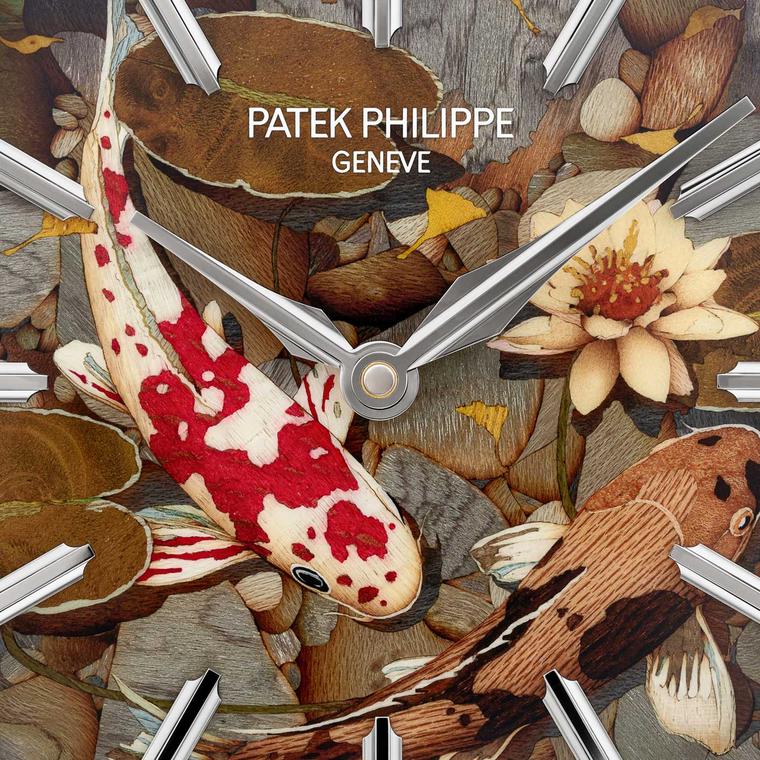
Marquetry was only recently adapted for watch use, previously confined to furniture or small wood objects. The Carp and Water Lilies desk clock (above) recreates a pebble-lined fish pond where two mottled carp swim below the lilies in zen-like tranquillity. The scene is formed with 385 different tiny wood parts chosen from 36 different types of wood for their colour and texture. The effect is spectacular and so skilfully crafted that it is hard to guess what material created this delightful scene in muted natural tones.
The 83 clocks on display are a mix of one-of-a-kind pieces and limited editions of, at the most, ten pieces, each destined for a collector. Collectors are allocated pieces by their local Patek Philippe retailer, making the exhibition a rare opportunity to see these masterpieces before they disappear into private collections. In 2022, the first Rare Handcraft exhibition left Geneva to be shown in Paris, and now, for the first time, it arrived in London.
Patek Philippe is dedicated to preserving these rare skills, a passion that is instilled in the family, stemming from the commitment of Henri Stern, the grandfather of the current CEO Thierry Stern. As Thierry Stern points out, maintaining the tradition of Rare Handcrafts is not a profit-making decision. "It is not what we are looking for at Patek Philippe. We are a family-owned company and love beautiful things, which is what we love to do. It is not a business, it is a passion. Sadly, we have to sell them, but I would love to be able to keep them in our museum. We need to have the ideas, but we also need the artisans. At Patek, we are willing to preserve and promote these rare handcrafts through generations. I am already teaching my son about this world so that it will continue to grow."



